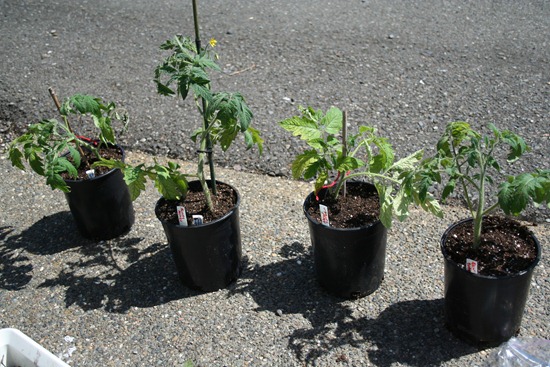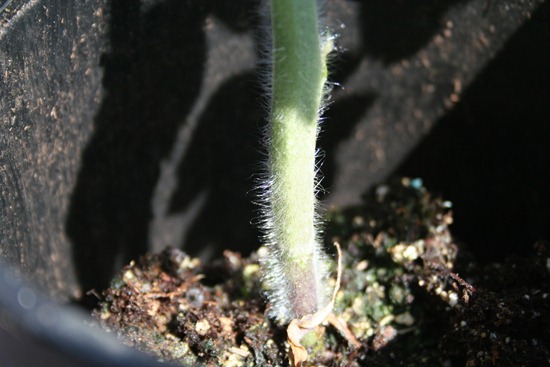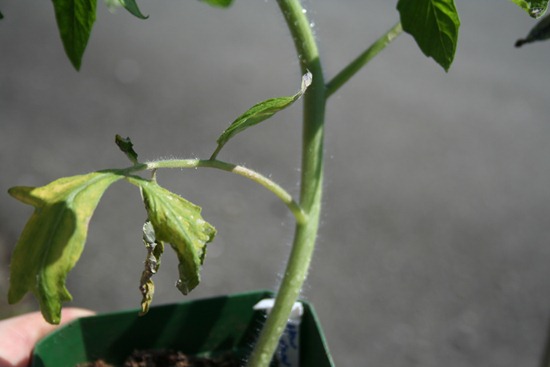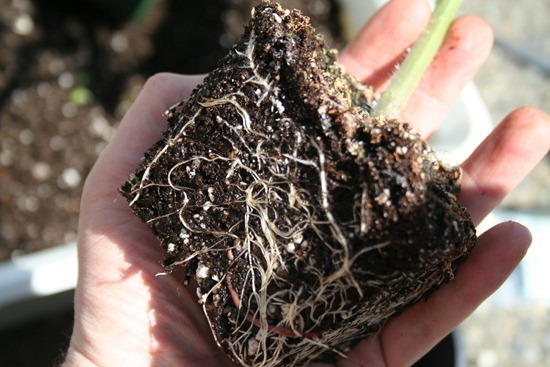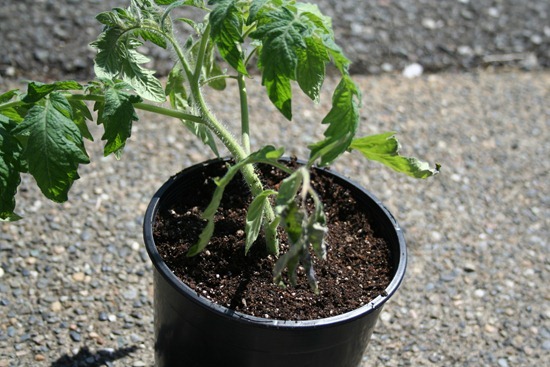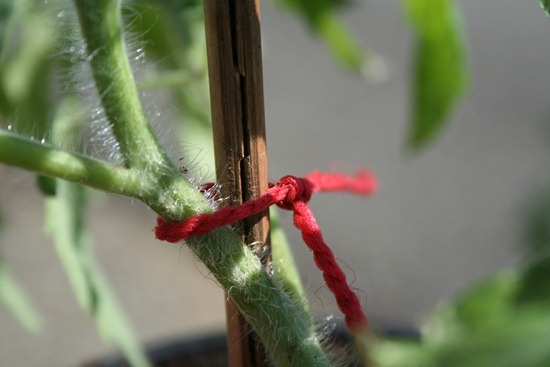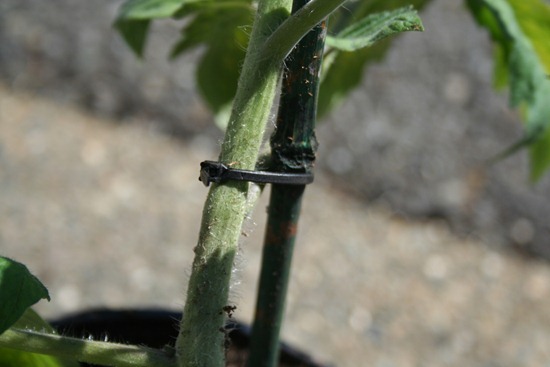Indoor gardening with 2 liter bottle and USB LED light
11.3 years ago indoor growbox, indoor seed starting, LEDs
I came across this pretty cool Kickstarter from Vegetronix where they are putting together a neat little kit that includes an adjustable 1 watt that can plug into any USB port on your computer. All you need to supply is an old 2 liter bottle and you have a nicely contained growing environment.
Personally, I think this could make an awesome addition to my windowless office and bring a little plant life to my personal space.
If the Vegetronix name sounds familiar, I use their moisture sensors in my grow box which I wrote here.
Things to know before making home garden greenhouse
11.4 years ago greenhouse, indoor growbox, indoor seed starting
There are so many options these days when you decide to own a greenhouse. You can buy a lot of greenhouse structures and modify them or just do-it-yourself. Also there are guides for you to build your own greenhouse. These guides are available on the net, and also on print.
But before you start, you first need to decide on what you need. It is also important to know or understand what you can build and what you want to grow.
Other important aspect that needs to be considered is the expenditure and the climate of your region. Space that you have at your disposal is also one of the key factors. Mentioned below are some of the things you must know before you start your dream project.
1. Location:
Always try to place your greenhouse in such a spot that enjoys a lot of sunshine. It is better that there are no shady trees around. This will have two benefits, during storms the chances of branches falling on your greenhouse is nullified, and shade from the trees will not affect the heating up of your greenhouse. More importantly shedding of the leaves from these plants can prove to be a problem to the greenhouse too.
In case the greenhouse tends to overheat, using a cover or painting it can be good options.
2. Cleaning:
If you are planning to reuse your old greenhouse or even set up your new one, make sure to clean and scrub all windows and glass parts. Also clean the outer surface. Using brown soap for cleaning seems to be the best option. In case you are cleaning the old one make sure to remove insect protections if any before the cleaning jobs starts.
3. Temperature:
The temperature in the greenhouse should range between 77 degrees F (25 degrees C) and 59 degrees F (15 degree Celsius) on the positive side. There can be lots of options to heat your greenhouse, which is very essential for the success of a greenhouse. Electrical heaters, oil or wood fuelled ones are also available with the gas powered ones; but all these heating systems particularly the last three must be ventilated to the outside properly.
These days passive solar green heating options are also available which are very much environment friendly as well. They also have a heat sink which stores the heat and uses it to heat the structure during the dark phase.
The heat needed in the greenhouse is proportional to the size of the greenhouse and also varies with the crops. Consult a professional to help you calculate the proper temperature to be maintained.
4. Ventilation:
Proper ventilation of the greenhouse is extremely important.
Ventilation will circulate air inside the greenhouse and fresh air is necessary for proper plant growth. Stale air is not conducive for proper plant growth.
5. Insulation:
Insulating the greenhouse is very important for it to function properly. The structure need to be airtight in order to bring in the best result.
6. Moisture:
The moisture inside the greenhouse needs to be maintained along with a good drainage. Overwatering and under-watering can both be harmful to the plants. So make sure to have the right amount of water, and a good drainage to ensure that its does not remain water-logged. Automated water sprinklers can be very useful. Rainwater harvesting and recycling can be environment friendly options.
7. Protection:
Protecting the plants from pests and other elements need to be one of the priorities. Make sure to use good quality soil, and treating them before use, and also use pesticides and fungicides regularly. Bio-pesticides and bio-fungicides will help for greener environment.
8. Fertilizers:
Depending on the soil quality and nutrient choose fertilizers. But do not use excessive fertilizers, as they harm the plants much more. Use bio-fertilizers like compost for best results.
Conclusion:
Take into account the climate you live in and choose the crops accordingly. That will save you a lot of pain. Non-heated greenhouse can be fine, but that will only reduce your choice of crops, and the growing season possibly. Try not to make the green house too low, or the roof flat as that may cause unforeseen trouble, as the roof might cave in at some point of time.
About The Author: Alia is a writer/blogger. She loves writing, travelling and blogging. She contributes in Morris Gad
Plan your garden with Sprout Robot
12.2 years ago gardening software, indoor seed starting, robot, seeds, sprouting
I came across Sprout Robot in the past week, you simply create an account and provide your zip code and it will give you a complete calendar of planting dates as well as follow ups when to expect sprouts to form, when to bring out, harvest etc.
When a new event is coming up you will get an email similar to the one below letting you know what is new to plant that week.
When you connect to the site you then can “Check-In” and check off the tasks you have completed which get updated with next event for that plant.
They also have an option where they will even send out organic seeds just in time for planting in your area starting at $19.99 a year, though personally I have plenty of seeds saved for at a couple of years in my refrigerator.
Using GrowVeg to discover new vegetables to grow
12.2 years ago gardening software, growveg, indoor seed starting
It seems like every year there is something I decide I want to grow in my garden only to discover I am a couple months late to get started. In the past season this was brussel sprouts, I had grand visions of growing them this winter only to discover I should have started the seeds back in March…
I got a great idea when I was planning this years garden in GrowVeg where I simply created a plot and just dropped in each vegetable that I typically eat and enjoy regardless is I have grown them in the past or plan to in the future.
This way when the time comes when I should be planting these I will see this on the chart I printed out and get a reminder email in my mailbox from GrowVeg I can make this impulse decision to get seeds and start these plants at a time where I can still be successful.
Just by doing this exercise I have decided to consider fennel, Jerusalem artichoke, parsnips, and sweet potatoes. Sure many of these may result in utter failures in my cold damp area but at least I can make sure I can start at the right time to give them a fighting chance.
Growing tomatoes and getting to grips with the green tomatoes at the end of the year
12.5 years ago indoor seed starting, product review, sponsored post, tomato
October tends to see the first frosts in much of the UK and as tomato plants won’t survive a frost, gardeners growing tomatoes not lucky enough to have a heated greenhouse are struggling to get those stubbornly green tomatoes to ripen.

Figure 1 – The end of the growing tomatoes year – green unripen tomatoes
If you are wondering how to grow tomatoes so that they have the best chance of turning red you will be interested to know that temperature has a major impact on ripening. If your fruits are too cold they will not turn red. To give your tomatoes the best chance of ripening properly you should ensure your tomato plants are maintained at the correct temperature throughout the entire growing process. Tomato seeds need a temperature between 18°C and 22°C (68°F to 75°F) to germinate and tomato plants won’t survive below 10°C. It is also important to grow them somewhere where they are exposed to as much natural sunlight as possible to aid photosynthesis.
A Helpful introduction to tomato growing
Many growers make use of seed propagators such as the Greenhouse Sensation Vitopod to ensure their seeds are kept at the optimum temperature for germination. The Vitopod is particularly useful compared to traditional tomato pots in a basic propagator, because it is large enough to be used for hardening-off and protecting young tomato plants from late frosts. The shock of a late frost to a young tomato plant just out of a heated propagator can kill the plant, resulting in you having to start again.
Obviously greenhouses, polytunnels or even a conservatory are the ideal environment in which to keep your tomato plants warm but many people do grow outdoors, just make sure you choose a bright spot and be aware that they will take longer to ripen because of the cooler temperatures.
Even though October can be a particularly bountiful month and with aids such as the self-watering tomato pots such as the hydro grow system you can sometimes harvest fruit through to December providing that the plant is located in a heated location such as a greenhouse. The season is never long enough to ripen every single tomato you grow on the vine. Consequently no matter how particular you are with caring for your tomato plants it is inevitable that if you have produced a bumper crop you will end up with a lot of green fruit. If your vines are groaning with green tomatoes there are a couple of methods you can employ to encourage them to turn red:
One solution commonly advocated in gardening circles is harvesting the green tomatoes and placing them in close proximity to a banana. This works because ripening bananas give off ethylene — an odorless gaseous organic compound which also occurs naturally in tomatoes and catalyzes the ripening process.. Tomatoes produce their own ethylene once they have reached the mature green stage of their development but the process can be speeded-up by placing tomatoes near ripe bananas, the ethylene produced by the bananas stimulates the ripening process normally stimulated by the tomatoes own ethylene, this can be blown away if they are being grown in a windy environment.
How to get green tomatoes to ripen
One way of employing this method is by selecting three or four green or yellow tomatoes and placing them in a box with a banana which is starting to ripen. Ideally the banana should be at the stage where it is still green in places but turning yellow. This process will take one or two weeks so you may have to change the banana at some point. Alternatively you could just place a few tomatoes in a sunny spot near a bunch of bananas. Many growers use apples instead of bananas for this technique due to their abundance in British gardens (unlike bananas)!
Another way of encouraging your green tomatoes to turn red is by placing the fruit in a closed paper bag on its own. This traps the ethylene which the tomato produces itself and accelerates the ripening process. Simply place the fruit in a brown paper bag, folding the top over it twice to seal it. Regularly checking to see if the fruit is ripening is important to ensure that it doesn’t start to rot, especially in a humid environment such as a home.
If you are thinking of growing tomatoes at home the Greenhouse Sensation site has some excellent information about the varieties to grow, how and when to sow tomato seeds.
How to repot tomato seedlings
13 years ago indoor seed starting, repot, seedling, tomato
When growing tomatoes from seed you are going to have to repot them. The basic idea is you never want to stress the plant out by restricting the roots from getting wider. Fortunately the process to do this between the various growth states is pretty simple and does not really change much between repotting.
The first time you will need to repot them to a 4 inch put when the seedlings you initially planted get about 4 inches tall using the same steps I mention in detail below.
Once the tomato plant begins to grow wider than the pot (I was a couple weeks late below) or about 7-8 inches tall this is a good time to move up to a gallon planting container.
Now you may be asking, “Hey Mr. Cheap Vegetable Gardener, those fancy generic nursery containers are expensive. I have seen them for almost $2.00 each at my local home improvement store.” Funny you asked, I picked up a bunch of these while going for a walk with my kids that someone dumped as garbage…so I stocked up.
Step 1: The Soil: Given I have quite a bit more volume to fill I modify my seedling mixture from 2 parts coconut coir (or peat moss) and 1 part perlite to 1 part coconut coir (or peat moss), 1 part perlite, and 1 part soil from my garden. This is for no other reason other than I am cheap and bagged soils can be expensive. I also add a thin layer of bone meal and a little sprinkling of eggshells to provide a boost of calcium and Phosphorous. I also add a little water to and mix until well incorporated
Step 2: Fill the bottom: You are only going to want to put about 1.5 inches of soil in the bottom of your 1 gallon nursery planter. I will explain why we are putting so little shortly.
Tomatoes have a special ability to grow roots out of its stem due to the fact that it has these little white hairs growing out of it (see below) When these are planted below the surface it will allow you to make a much stronger root system to your plants and a much more vigorous tomato plant.
Step 3: Remove leaves from plant: To take advantage of extra root growth and any leaves that will be buried are not going to help the plant anymore so remove this with knife/pruners or your fingernails in a pinch (pun intended)
Step 4: Remove plant from previous container: Tomatoes are pretty tough for transplanting but you do want to take some care to not shock the plant during this removal. It advisable for the roots to be moist but not soaking wet so the root ball comes out easily but not so wet that all the supporting dirt falls away when removed. If you have some problems removing the plant try gentle inserting a butter knife around the edges to loosen its grip.
Step 5: Fill with soil: Fill the plant all the way to the top with soil pack down lightly and repeat until you have some firm soil up to the top of your plant.
Step 6: Stake your plant (Optional). If your plant is looking a bit unstable like the one above I like to take one of the cheapest bamboo stakes I can buy (sticks from the yard would also work) and cut them to 12 inch length and press them about 1 inch away from the plant. Now simply attach with whatever you can find handy close to you. Some classics are plant tie tape, twist-ties, reusable Velcro straps, yarn, and twine. Today I happened to find a piece of yarn on the floor of my garage and a couple zip ties so I put them to good use. You want these tight enough to support the plant but still loose enough to allow the plant to grow.
No matter how careful you are the plant will go through some shock during this ordeal and probably will look a little sick for a day or two but should bounce back shortly after that and continue expanding with its newly added space.







